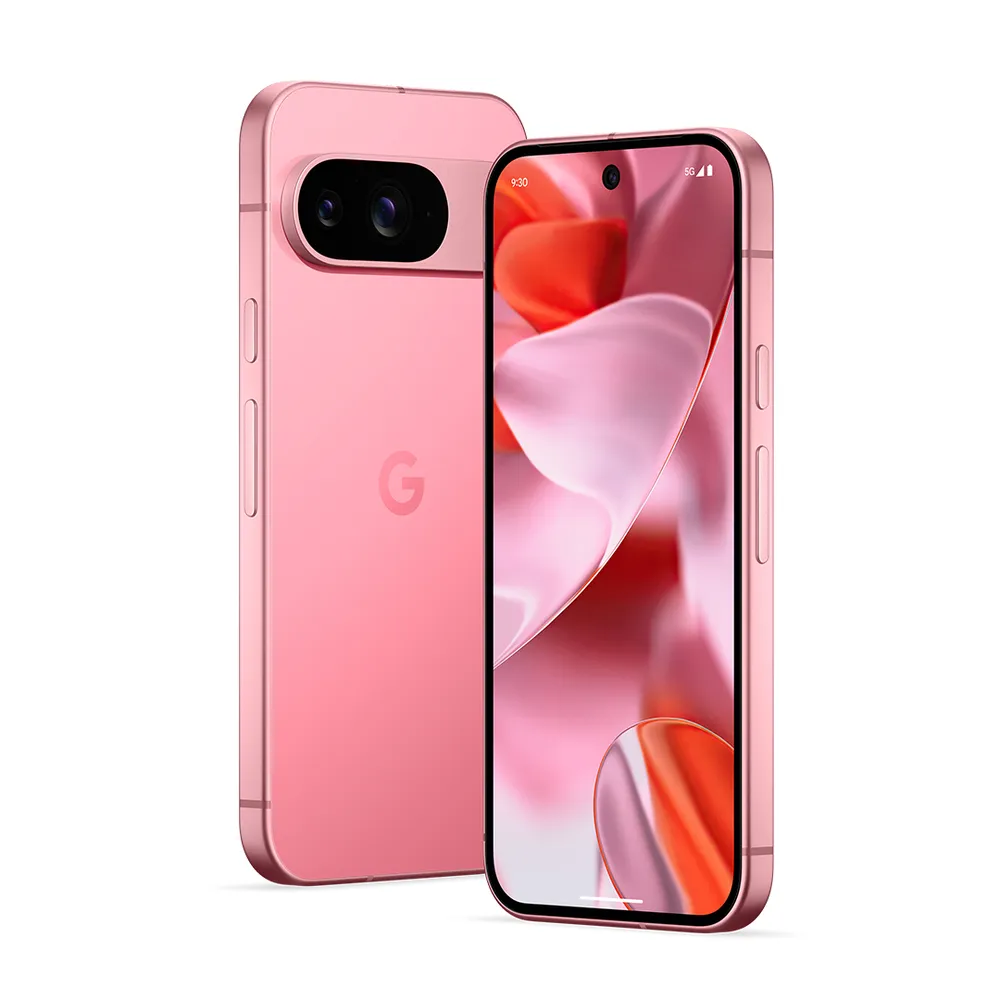
The Made by Google Hardware event was held a few hours ago. Google gave us a first look at the updated Pixel 9 lineup and improvements for all of Google’s other products. This year, Google is expanding its Pixel phone selection. There are currently three Pro variants in the Pixel 9 series: the Pixel 9 Pro, Pixel 9 Pro XL, and Pixel 9 Pro Fold, in addition to the Pixel 9 basic model. They all provide new Tensor G4 processors, improved designs, and abundant AI functions.
The redesigned Pixel 9 design language features flat sides instead of curved corners, giving it a more iPhone-like appearance from the front. But all Pixel makes up the back panel. The camera oval that protrudes from the back of the phone is now an extended, free-floating camera bar.
With a larger 6.3-inch screen, the ordinary Pixel 9 maintains its fundamental dimensions, while the larger 6.8-inch screen of the 9 Pro XL makes it around the same size as the Pixel 8 Pro. The new offering is the Pixel 9 Pro, which falls somewhere in the middle and is roughly the same size as the Pixel 9 with most of the capabilities added.
The Pixel 9 Pro Fold, the revised version of the phone formerly known as the Pixel Fold, has primarily improvements to its dimensions. When unfolded, it is now 5.1 mm thick, as opposed to 5.8 mm. Along with being taller than the previous edition, the Pixel Fold was only 139.7mm long and had a 5.8-inch screen; this new model is 155.2mm on the long edge with a 6.3-inch outside screen.
Having conducted extensive research and created a spreadsheet, the conclusion is that having a large amount of RAM is what distinguishes a Pro phone from other models. Well, it may not be entirely correct, but 16GB of RAM is a feature shared by all three of the Pro models. Now, the Pixel 9 also includes 12GB. This is important when attempting to run artificial intelligence on a device, and the Pixel 9 series includes an upgraded Gemini Nano model that adds multimodality, enabling it to analyze audio and images in addition to text.
A new Recall-like feature that can organize and recover data from your screenshots is one of the new AI capabilities coming to the Pixel 9 series. However, unlike Microsoft’s method, this feature only functions with screenshots that you manually take. This feature is limited to Pixel devices and occurs on-device. Additionally, a new software called Pixel Studio (which does not operate on a device) employs generative AI to create drawings from text prompts.

However, as usual, the majority of the AI abilities are saved for images. As always, with the possibilities of these tools, users will be left wondering just what a photo is. A new feature in Magic Editor allows you to “reimagine” a scene. With generative AI, you may use language prompts to modify selected areas of an image, instead of merely adjusting lighting. Add Me is another tool that makes it easier to include someone in a group photo. The user interface (UI) walks you through the process of taking a first picture, allowing the photographer to move into the frame and hand off the phone for a second shot, which the AI combines into a single frame that includes every person.
Similar to Apple’s satellite emergency function, the Pixel 9 series will be the first Android phone in the US to support Satellite SOS, which will enable you to connect to emergency services when you’re not receiving phone service. Later this year, most likely with Android 15, that will happen. This year’s crop of Pixel phones will come pre-installed with Android 14, instead of the most recent version of the Android operating system, due to Google’s hardware event taking place earlier than normal. However, the Pixel 9 series will receive seven years’ worth of OS upgrades and security fixes, the same as the Pixel phones from the previous generation.
![]()
Concerning the camera, the Pixel 9, 9 Pro, and 9 Pro XL all have improved ultrawide cameras and the same 50-megapixel f/1.7 sensor as the models from last year. There’s a new 42-megapixel autofocus selfie camera on the 9 Pro and 9 Pro XL. Although the Pixel 9 retains its 10.5-megapixel selfie camera, autofocus is added for the first time.
Google has also made some internal improvements. Sharpening and contrast have been modified in the HDR Plus pipeline, and a redesigned user interface and support for Night Sight are highlights of the Panorama mode. Only the 9 Pro and 9 Pro XL have access to Video Boost, an off-device AI-powered processing function that can be used to make upscaled 8K footage. It also works with digitally zoomed video clips to smooth out transitions between lenses and add back information.
The camera specifications of the Pixel 9 Pro Fold remain weaker than those of the previous Pro Pixels. Compared to the 9 Pro and Pro XL, it boasts a 48-megapixel f/1.7 main camera as well as lower-resolution ultrawide and telephoto sensors. PM pixel camera According to Isaac Reynolds, there have been improvements made to the Fold’s hardware from the previous year, including new, identical selfie cameras on the inner and outside screens. Compromises have been made, though, because a thicker phone would have required more sophisticated camera gear.
The primary feature of a folding phone, however, is its inside screen, which is larger this time around (8 inches as opposed to 7.6 inches) and brighter than ever before (1,450 nits to 2,700 nits at peak brightness mode). It should be significantly simpler to use in bright light outside as a result.
August 22 is when the Google Pixel 9 goes on sale. Its starting price of $799 is $100 more than it was a year ago. Starting at $999 and $1,099, respectively, the Pixel 9 Pro and Pro XL will launch in September, while the XL will ship on August 22nd, and September 4th for the Pixel 9 Pro Fold at $1,799.
Discover more from TechBooky
Subscribe to get the latest posts sent to your email.







